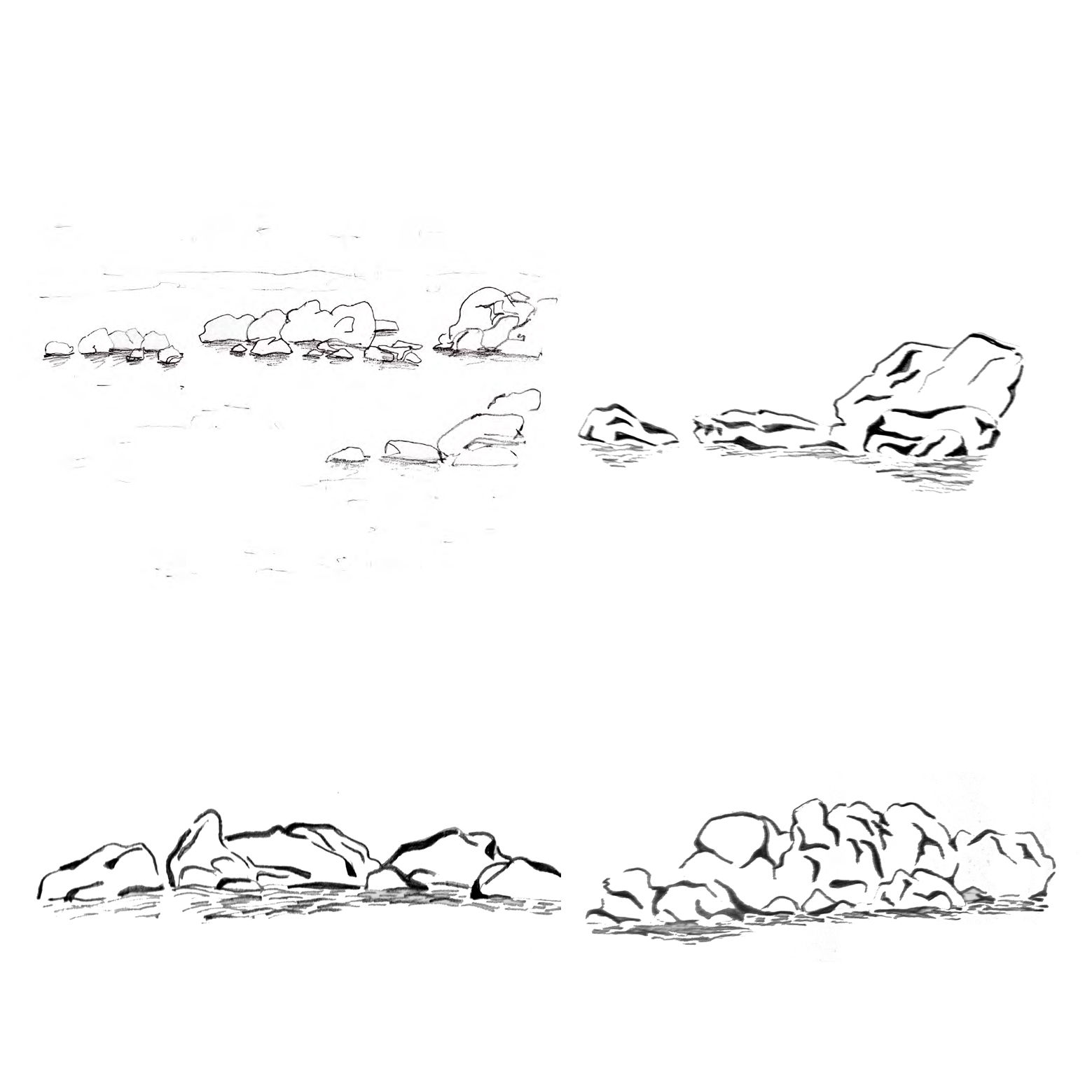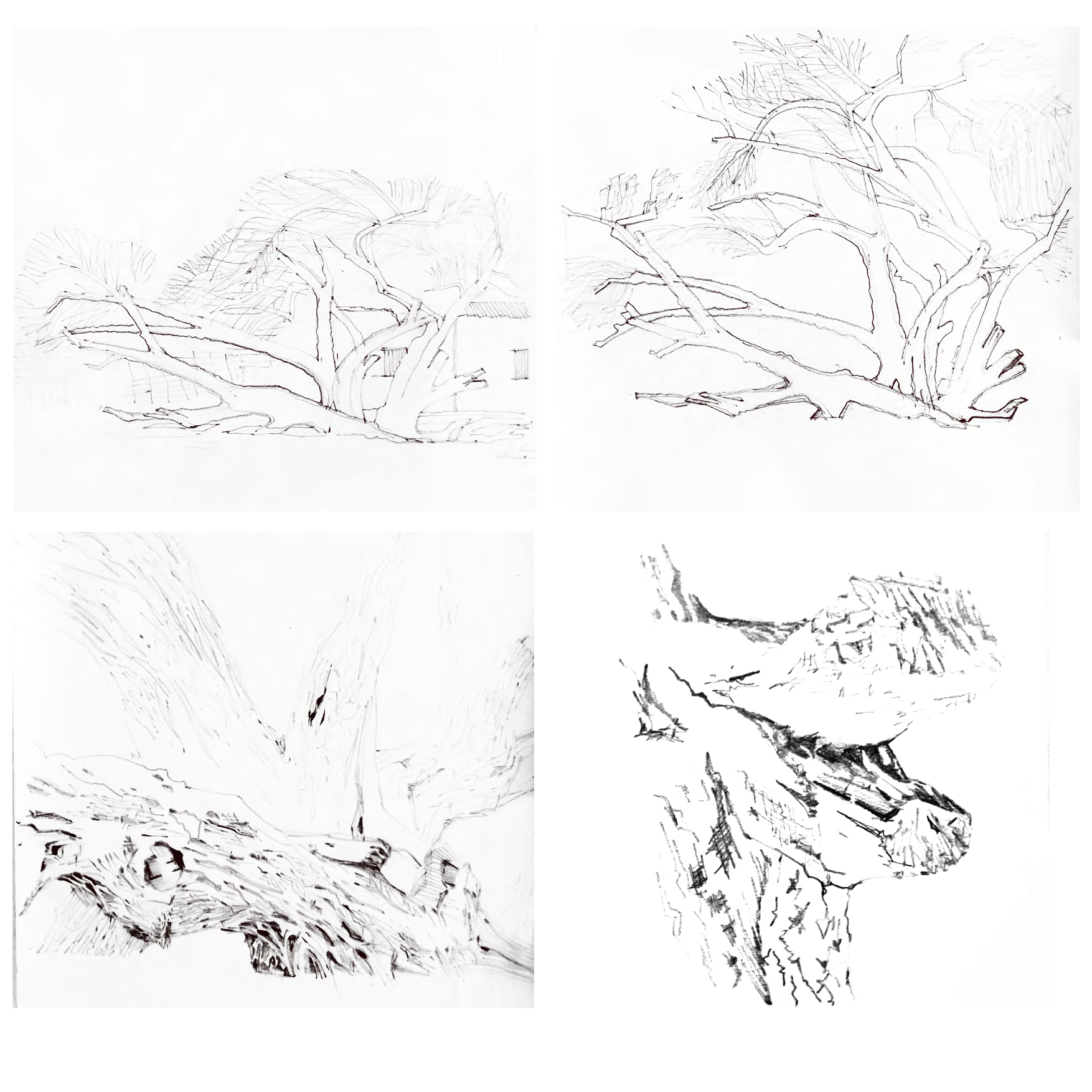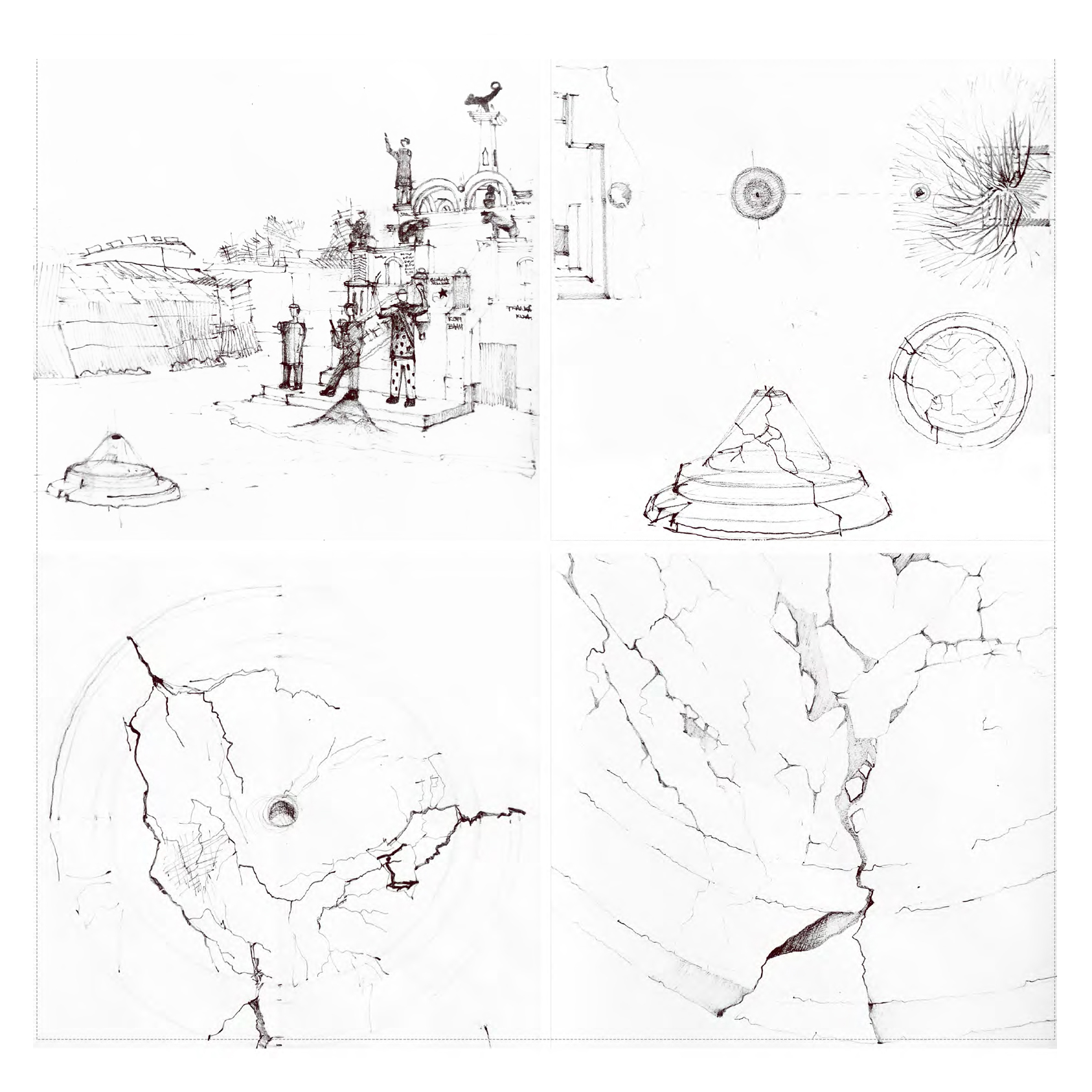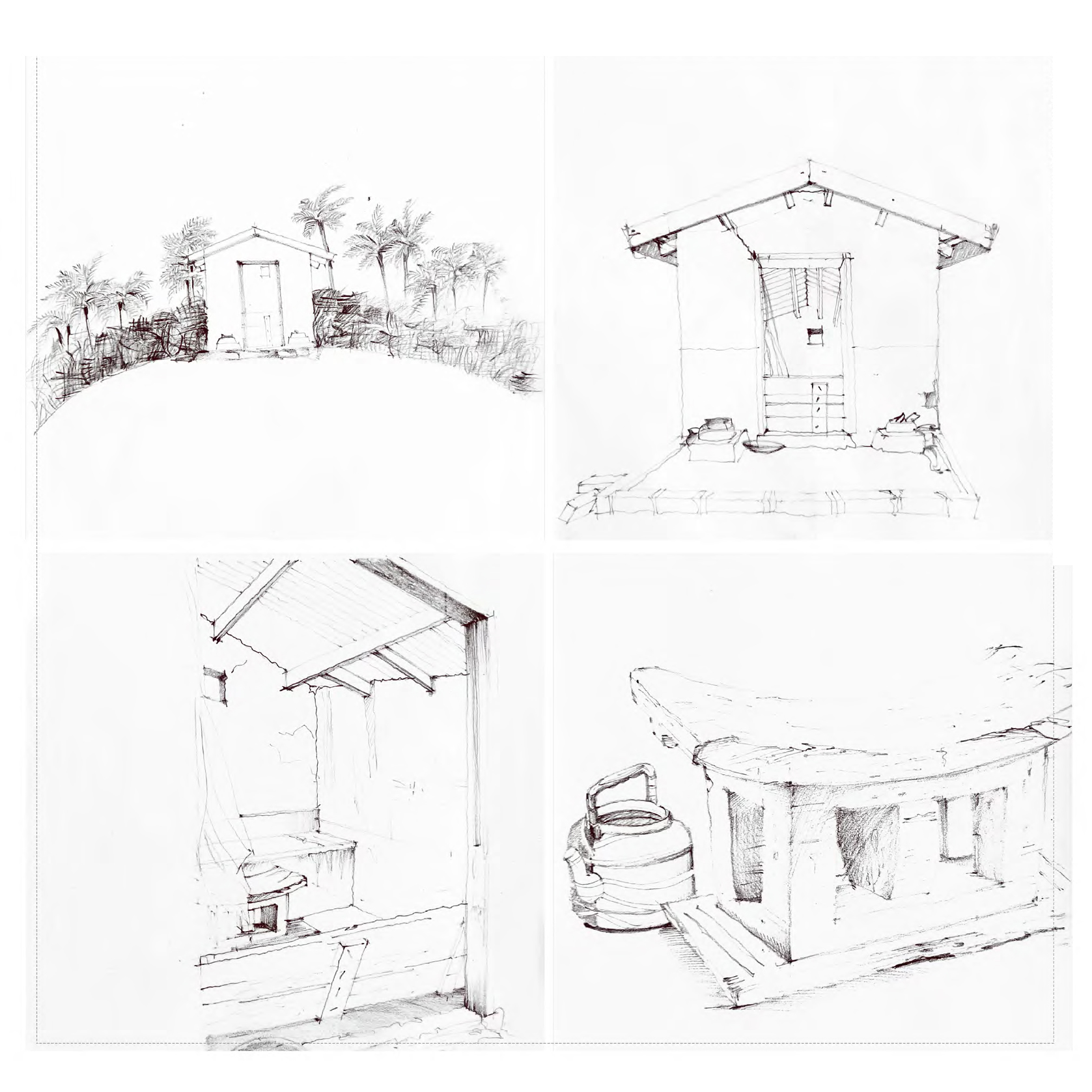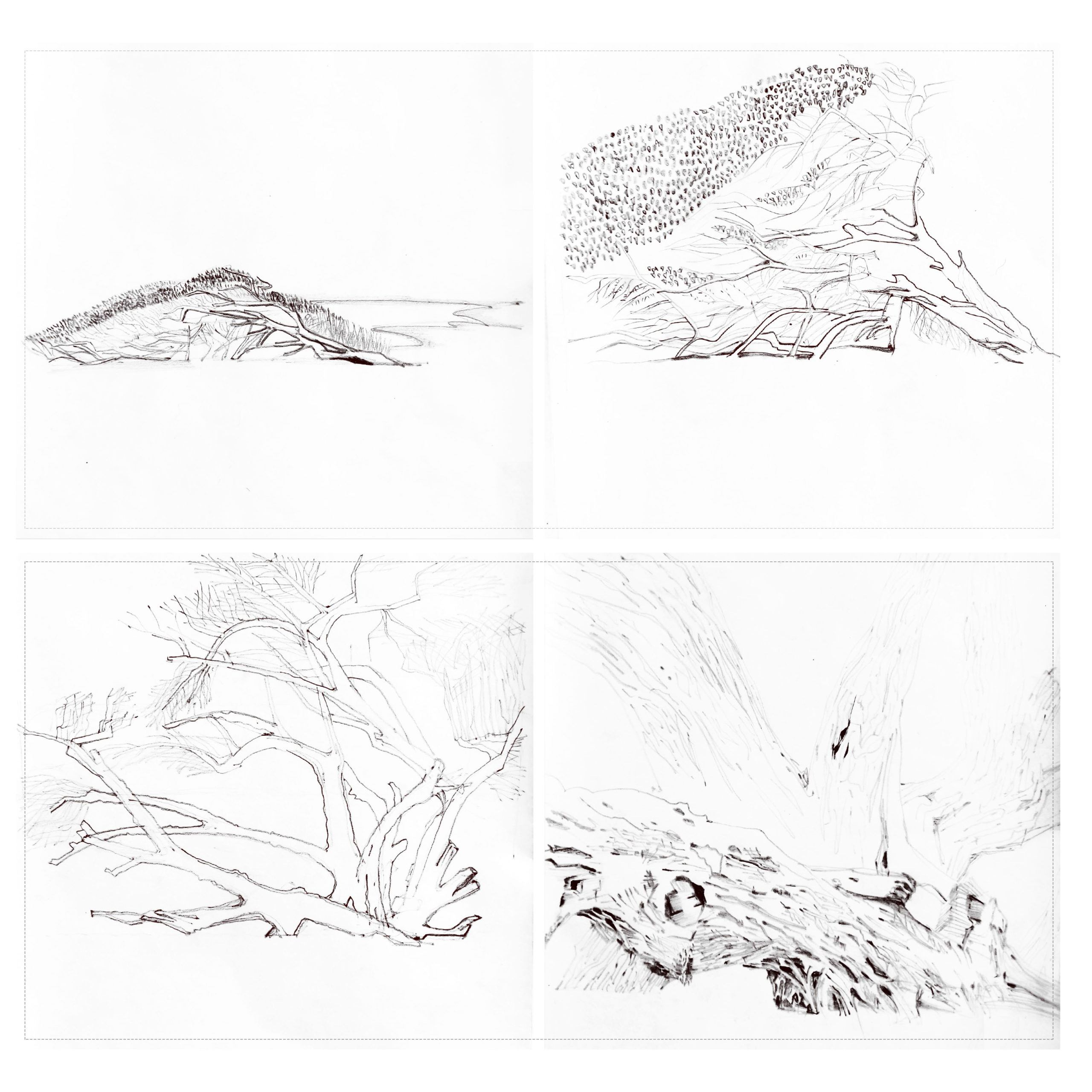Ruga Naturii
ART WORKSHOP WITH CHILDREN FROM IMMUNA VILLAGE
exhibition
Ruga Naturii
Accra, September, 2015
In Immuna, there is a great spiritual importance attached to the lagoon. In Ghana it is said that lagoon is inhabited by spirits and the water itself is sacred, in Immuna having the obosum ObodaObodo and Immuna on and close by the lagoon, so traditional beliefs dictate a code of conduct which should be respected in order to protect the lagoon and the environment.
The lagoon is important in conserving several species of mangroves, crabs, shrimps and raffia plants. The mangrove ecosystem is the most productive of the coastal ecosystems which provides extensive varying habitats. There is also zonation of the mangroves and animals to the different salinity levels and depth. The mangrove areas again serves as a nursery and feeding ground for both migrant and resident and other invertebrates and worms. The species include shore birds such as waders, terns, gulls, herons, terns and ducks. Most of the red and white mangroves around the lagoons have been cut down for fuelwood or to create salt pans.
The Lagoon prevents also the surface from moving swiftly downstream and overflowing, so it prevents erosion and flood conditions. Mangroves and other forested are protecting the coastal areas by acting as windbreaks and helping to dissipate the impact of coastal storm surges. Salt production with salt mining endangeres the livelihoods by creating a crater to remove sand, damages the banks of the lagoon and creates the threat of flooding.
Obosum Obo-da-Obodo
charcoal on paper
2015
Obosum Immuna
charcoal on paper
2015
Obosum Bawar
charcoal on paper
2015
Obosum Eckinaba
charcoal on paper
2015
Obosum Bradam
charcoal on paper
2015
Obosum Tongo
charcoal on paper
2015
Obosum – Spiritual Reasearch in Immuna
In Immuna we have rediscovered, through the spirituality of the landscape and people’s ancient beliefs in gods or “Obosom”, a preserved natural way to go back to our roots, to reconnect with nature and divinity. The people used to feel connected with their environment by worshiping gods that live in trees, rocks, water and houses. Nowadays, deforestation and sandmining driven by economic forces, are endangering Immuna’s natural environment, the lagoon, the sacred mangroves, as people’s belief in gods and spiritual places is fading. That brings us to the question if Gods are are forgotten? Maybe.
Focusing on 7 out of 77 gods and spiritual places that exists in Immuna through the media of drawing, I implemented into the research three different layers of information and interpretation: my personal approach, children’s innocent perspective and elders knowledge transmitted through incantations and dance by the fetish priestess of the village. These sacred places (Obosum Bradam, Tongo, ObodaObodo, Immuna, Bawar, Ekyinaba, Acirum). Path to understanding the relationship between magic and popular religion is through the concept of syncretism, which basically means the blending or amalgamation of different religious traditions within a population. The dominant religion might denounce the result of the processs as magic or superstition. But used sensitively it can also be applied the way in which people appropriate and take control of theologies and cultural beliefs imposed upon them, adapting them to suit their own distinctive needs. In the context of magic then, the continued resort to older religious pratices is not a survival but an adaptation. The people using such practices consider them valid within their conception of what is acceptable to their faith.
Similar syncretic belief systems have been identified, such as those born on the interplay between Islam and indigenous religions in West Africa, more specifically in Immuna, where this religious mixt is very much present, how magic is inextricably intertwined with the development of religion as part of the process. Connection with the religion of children I worked with as muslims. They didn’t believe in gods, but where aware of the power of the obosom, for example they didn’t want to get closer to the garden in front of the obosom Bradam. In any kind of evolvement, natural or spiritual, at the beginning we have simple shapes and just after the more complex ones. Because of that, in the primitive art of any kind, shapes of any kind as well as the laws that governs them, are easier to aknowledge than forms and laws of art of an evolved culture. What is primitive is natural, so normally, initially is very intuitive and still unmodified by the superior stages of the evolution of art.
The most simple shapes from the beginning of art, appeared spontaneously, are those art shapes which they have no influences yet, such as absolute primitivism. One of the purest manifestation of the absolute primitivism is infantile art. Children which were not influenced yet by the evolved art or they haven’t met the drawing problems imposed by school or family.
Understanding child’s art is mandatory to understand any kind of primitive art, especially the exotic art. For Immuna’s cultural platform, we should understand each spiritual and cultural spaces through drawing and collection of stories and incantation, research based on african theology belief system and the field of influence of each obosom, creating a personal drawing methodology and understanding the art of children by reinterpretating their intentions in connection with their theological beliefs.

